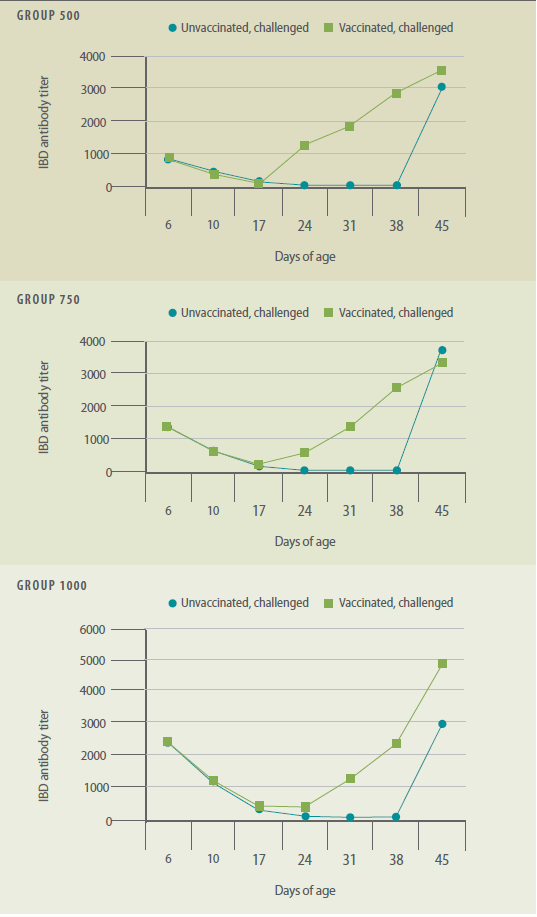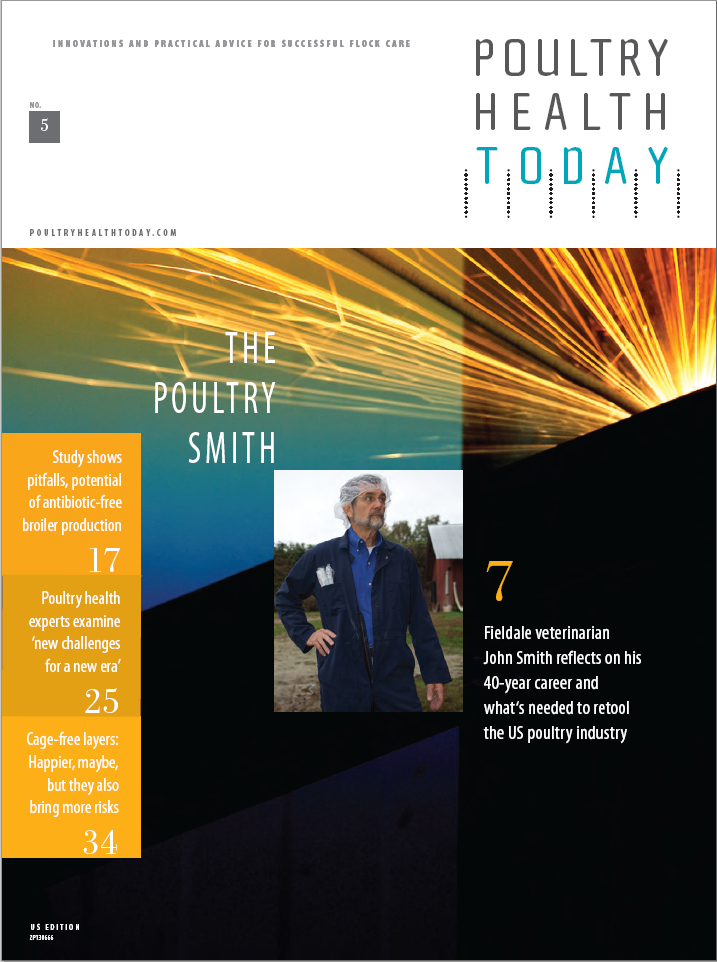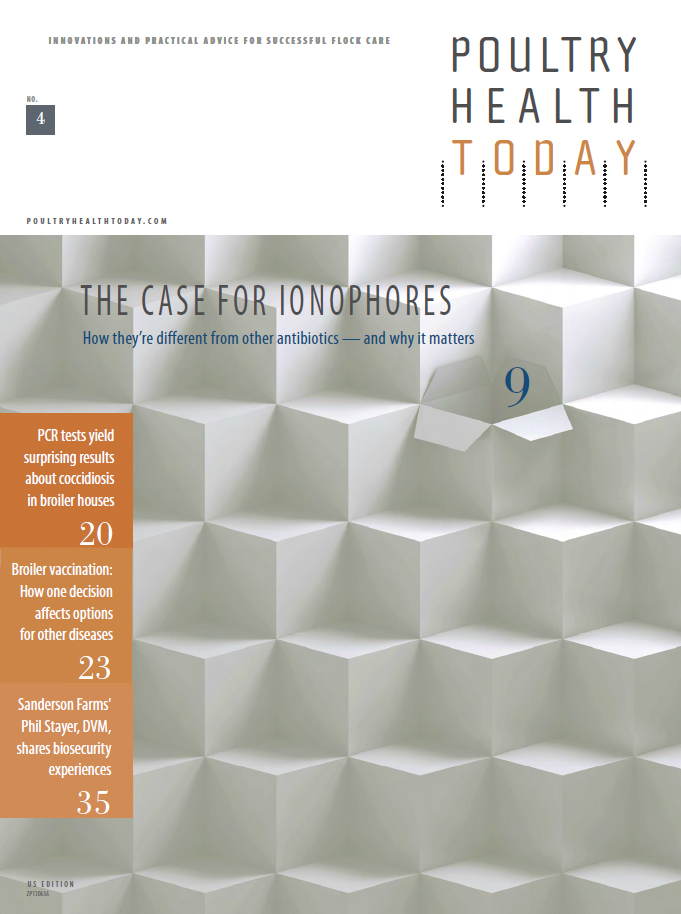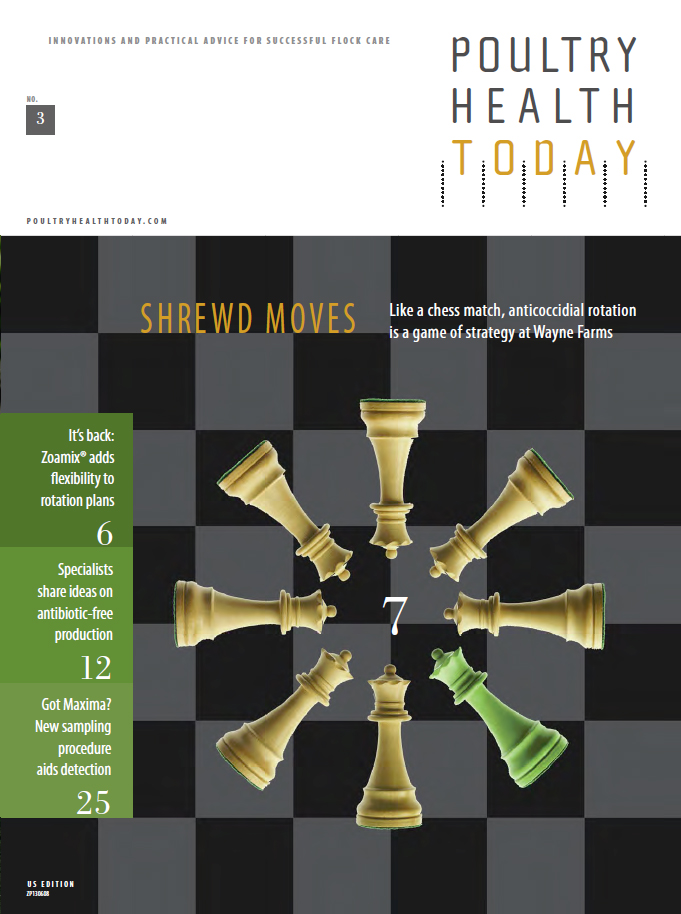

IBD V877 vaccine can break through maternal antibodies

A live infectious bursal disease (IBD) vaccine based on the V877 strain can override maternal antibodies, doesn’t revert to virulence and has limited interactions with other live vaccines, indicate a series of studies.1,2
The vaccine is safe but is best used when sufficient levels of maternally derived antibodies (MDA) are present, said Harm Geerligs, PhD, one of the investigators in the study and Associate Director, Veterinary Medical Research and Development, Poultry Biologicals, Zoetis.
IBD infection, first identified in the Gumboro, Delaware, area of the US, remains a serious and highly contagious viral disease of young chickens. Birds are particularly susceptible between 2 and 4 weeks of age. IBD has the potential for causing severe economic losses for poultry producers, Geerligs said.
When IBD infection pressure is high and chickens have high MDA to the IBD virus, most poultry operations use so-called “intermediate-plus” IBD vaccines. however, not all intermediate-plus IBD vaccines have good efficacy in the presence of MDA, Geerligs cautioned.
‘Revert to virulence’
In addition, some may cause severe bursal atrophy, resulting in immunosuppression that leads to poor immune response to other vaccines. “There is also concern that intermediate-plus vaccines may revert to virulence,” he added.
One of the commercial intermediate-plus IBD vaccines used in the poultry industry is Poulvac Bursa Plus (known as Bursine Plus in the US). Introduced to the poultry industry in the early 1980s, it contains the V877 IBD strain derived from a classic Australian field isolate, he said.
To test the efficacy of this vaccine in chickens with high MDA, investigators conducted a controlled study in commercial broilers. they determined the MDA titer of individual 6-day-old birds and then assigned them to a low, average or high MDA group accordingly.
Researchers vaccinated the birds with Poulvac Bursa Plus administered in water at 10 days of age. using an eye dropper, they then challenged the birds with D6948, a very virulent IBD strain, at 38 days of age. Some birds were unvaccinated and challenged; others were unvaccinated and not challenged and served as controls, Geerligs continued.

Figure 1. Mean IBD antibody
titers after vaccination with a live IBD V877 vaccine
Break through MDA titers
The researchers used elISa testing to determine IBD antibody titers throughout the study until the birds were 45 days of age. on day 48 of age, they collected bursae of fabricius and then weighed and examined them for histologic lesions. they also calculated the bursa-to-bodyweight ratio for each bird.
The V877-based IBD vaccine was able to break through a MDA flock titer higher than 1,100 as determined by IBD ELISA (Figure 1), and there was only a minimal decrease in vaccine efficacy as MDA increased, he said.
All vaccinated chickens remained healthy after challenge, and the vaccine protected the bursa of fabricius in chickens with high MDA as compared to unvaccinated, challenged controls, which had complete depletion of lymphoid tissue 10 days after challenge, Geerligs said.
Reversion to virulence study
To test the safety of the vaccine and any potential for reversion to virulence, the researchers administered a 10-fold dose of the V877 vaccine seed virus to day-old specific-pathogen-free chickens and administered it again after five back passages.
The vaccine virus caused lesions as would be expected for an intermediate-plus vaccine, but the scores were not much higher than the maximal scores allowed for mild IBD vaccines in the European Pharmacopoeia, and reversion to virulence was absent as seen by the rapid bursal recovery (Table 1), Geerligs reported.

Table 1. Bursal lesion scores determined during safety testing of the V877 vaccine
Vaccine interaction
Vaccination challenge studies were also conducted to determine if the V877 IBD vaccine interacted with other vaccines. researchers administered a live Newcastle disease (ND) LaSota vaccine alone or in combination with the V877 vaccine and then challenged birds with a virulent ND strain. they considered birds protected if ciliary movement occurred in at least nine of 10 tracheal sections (Table 2).
Use of the vaccines together had no negative impact on the efficacy of the ND vaccine nor on the antibody response to the ND challenge, he said.

Table 2. Protection of chickens vaccinated with an ND LaSota vaccine alone or in combination with the IBD V877 vaccine
A study conducted similarly with a live QX-like infectious bronchitis (IB) vaccine demonstrated that the V877 vaccine did not adversely affect the efficacy of the QX-like vaccine. although the V877 vaccine had a negative effect on the antibody response of the QX-like IB vaccine, a clear antibody response was detected.
“These studies show that the IBD V877 virus is a vaccine that is still highly efficacious in chickens with high MDA titers,” Geerligs said.
“The studies further show that the vaccine has a satisfactory safety profile,” he said. however, based on these current studies with V877 and the literature on bursal lesion scores, the presence of MDA is important regarding the protection of the bursa of fabricius against IBD lesions.
Determine MDA titers
“MDA levels should be determined in a sampling of flocks to establish what age to apply the V877 vaccine. the vaccine is best used when there are sufficient MDA levels — at least 500 upon elISa antibody testing — to limit the development of bursal lesions after vaccination,” Geerligs advised.
The higher the MDA titers, the better the protection, he continued. MDA bind to the virus, which is neutralized and unable to cause bursal damage. However, geerligs clarified, “if the MDA titer is too high, no vaccine efficacy can be expected. a titer of 1,143 wasn’t high enough to prevent V877 vaccine efficacy, and that titer is really high.”
The practical application of these MDA studies is they show that V877 vaccine performed both safely and effectively within a fairly wide MDA titer window of 500-1,100. this should allow producers to vaccinate most flocks in the same age range in the field — usually around 2 weeks of age.
More details about the studies with the V877 vaccine appear in the article “efficacy, Safety, and Interactions of a Live Infectious Bursal Disease Virus Vaccine for chickens Based on Strain IBD V877” in Avian Diseases 2015;59:114-121.
1Data on file, Study Report No. B81AR-NL-12-072, Zoetis Inc.
2Data on file, Study Report No. B81AR-NL-12-071 Zoetis Inc.
More Issues












